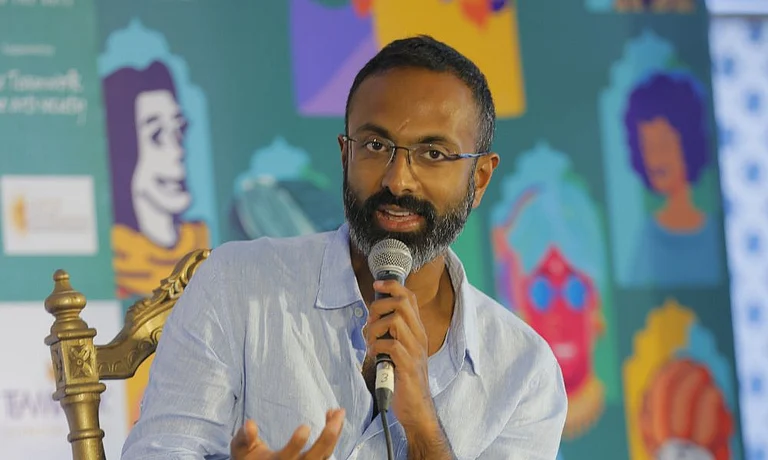People in Kashmir, central India and the Northeast have lived through turbulent times. The three zones have been afflicted by very different kinds of conflicts and the varied outcomes have continued to reverberate till the present times. The conflicting movements developed their own trajectories in each of the regions, shaped primarily by objectives espoused by militant groups.
The social milieu in which they emerged, factors like assistance received from overseas destinations and the way the governments chose to respond had an impact on the conflicts as well as the outcomes. The conflicts in the Northeast though had wider implications as the number of militant outfits and the number of people engaged with them was far more than in Kashmir and central India.
Advertisement
The armed campaign started in Nagaland soon after Independence with the emergence of the Naga National Council (NNC) that demanded secession of all Naga inhabited territories in the Northeast from India. Mizoram followed suit with a similar movement led by the Mizo National Front, following a famine that devastated the entire hill state. And by the early eighties, Manipur and Tripura were also reeling under disturbances with more groups having adopted the cult of the gun.
The decades of the 1980s and 90s were extremely turbulent in the Northeast. Assam was swept by the anti-foreigners’ agitation from 1979 that also sparked violence at regular intervals. It was in the backdrop of these myriad movements that the United Liberation Front of Asom (ULFA) originated in Assam and became active in the early 1980s, initially with the objective to protect the interests of the Assamese community and eventually with the demand for secession from India.
Advertisement
All these troubled regions have been a topic of research by academics, journalists and retired government officials. Many books have been published over the past several decades but the literature on each of these conflict zones have a flavour of its own. Several retired government employees have penned their memoirs on Kashmir. On Chhattisgarh, some deeply researched books and travelogues have been published. Mention may be made of Nandini Sundar’s The Burning Forest: India’s War In Bastar or Walking With The Comrades by Arundhati Roy. However, compared to these twin regions, the literature on insurgency in the Northeast is scant. A few memoirs of former government officials and books by academics are available but the bulk of the literature is based on secondary sources. Books based on ground research on insurgency in the Northeast are in acute shortage.
It is precisely this reason that makes Rajeev Bhattacharyya’s ULFA: The Mirage of Dawn published by HarperCollins Publishers India stand out from the other books in the genre published so far. The engrossing narrative with exclusive bits of information compels the reader to stay glued to the book which is similar to Nirmal Nibedon’s The Night of The Guerrillas which was on the separatist movement in the Naga-inhabited regions of the Northeast. Divided into ten chapters and sub-chapters, Bhattacharyya’s book is a portrait of the outlawed outfit with a focus on its overseas network and camps in the neighbouring countries of Bhutan, Myanmar and Bangladesh.
Advertisement
Almost all episodes that happened with or triggered by ULFA in Assam had been extensively reported by the media. Operation Bajrang, which was the first major operation by the army against the outfit in 1990, was well documented. Two incidents that had attracted a huge deal of attention were the abduction and murder of activist Sanjoy Ghose and the Tata Tea Tape controversy which was leaked by The Indian Express in 1997. Then there were other chapters like Operation Golden Bird, supposedly executed jointly by the Indian and Myanmar Armies, Operation All Clear in Bhutan entailing the elimination of all rebel camps, including those of ULFA, the Chittagong Arms Haul of 2004 in Bangladesh and the final chapter in the country when almost all the senior leaders, including chairman Arabinda Rajkhowa, were nabbed and handed over to India.
Advertisement
Bhattacharyya’s contribution has been to delve deeper into each of these episodes through interviews and perusal of diaries written by the rebel functionaries. Consequently, and not surprisingly, the author has stumbled upon a gamut of information that had never been published before. The interpretations that have been given cannot be discarded. For instance, there was no collaboration between the armed forces of India and Myanmar during Operation Golden Bird. On the contrary, there was hostility between the two sides as the operation progressed and efforts made to check the rebels from reaching Manipur. The author has also given an exhaustive note on the sources of information. In the case of Operation Golden Bird, it was one of the commanding officers that he interviewed besides a host of ULFA functionaries who were part of the operation.
Advertisement
Likewise, in the case of Sanjoy Ghosh, the author says that there was a greater possibility of the activist being drowned in the Brahmaputra and not killed by ULFA. Certainly, the book will compel the readers to afresh on many of these incidents. Many accounts that had gained currency over the years stand challenged in the book.
Overall, ULFA: The Mirage of Dawn is unputdownable and indispensable for anybody wishing to know about insurgency in India’s Northeast. At the same time, and despite the path-breaking research, the book suffers from several flaws. To begin with, there are editorial discrepancies which could induce the reader to think that the editing had been done in a hurried manner. While chief of staff Paresh Baruah has been referred to as Paresh similar to the style adopted with some other leaders of the outfit, he has also been mentioned as Baruah at a few places. Chairman Arabinda Rajkhowa, deputy chief of staff Raju Baruah or another functionary Munin Nabis, who established contact with Pakistan’s intelligence agency Inter Services Intelligence (ISI), have been referred to with their surnames. At a few places, some silly errors have been spotted which could have been avoided.
Advertisement
That the author had made painstaking efforts for the book is discernible in every chapter. The differences in the approaches between the police and the army in counter-insurgency operations have been narrated but it is too brief that could have been elaborated to give a broader perspective. And lastly, the QR Code at the end of the book is extremely irritating for the reader which could be a policy of the publisher to cut down on the cost of the book. Barring a few, most readers will not have the patience and time to have a glance at the source of information on the mobile phone after scanning the code.
Advertisement
Ashutosh Kumar Thakur is a Bengaluru-based management professional, literary critic, and curator





















